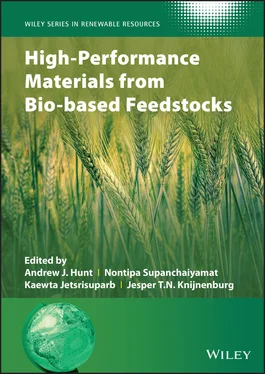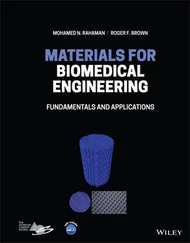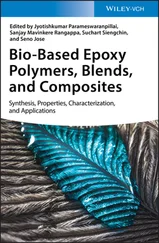High-Performance Materials from Bio-based Feedstocks
Здесь есть возможность читать онлайн «High-Performance Materials from Bio-based Feedstocks» — ознакомительный отрывок электронной книги совершенно бесплатно, а после прочтения отрывка купить полную версию. В некоторых случаях можно слушать аудио, скачать через торрент в формате fb2 и присутствует краткое содержание. Жанр: unrecognised, на английском языке. Описание произведения, (предисловие) а так же отзывы посетителей доступны на портале библиотеки ЛибКат.
- Название:High-Performance Materials from Bio-based Feedstocks
- Автор:
- Жанр:
- Год:неизвестен
- ISBN:нет данных
- Рейтинг книги:5 / 5. Голосов: 1
-
Избранное:Добавить в избранное
- Отзывы:
-
Ваша оценка:
- 100
- 1
- 2
- 3
- 4
- 5
High-Performance Materials from Bio-based Feedstocks: краткое содержание, описание и аннотация
Предлагаем к чтению аннотацию, описание, краткое содержание или предисловие (зависит от того, что написал сам автор книги «High-Performance Materials from Bio-based Feedstocks»). Если вы не нашли необходимую информацию о книге — напишите в комментариях, мы постараемся отыскать её.
High-Performance Materials from Bio-based Feedstocks
The latest advancements in the production, properties, and performance of bio-based feedstock materials
www.wiley.com/go/rrs High-Performance Materials from Bio-based Feedstocks
High-Performance Materials from Bio-based Feedstocks
High-Performance Materials from Bio-based Feedstocks — читать онлайн ознакомительный отрывок
Ниже представлен текст книги, разбитый по страницам. Система сохранения места последней прочитанной страницы, позволяет с удобством читать онлайн бесплатно книгу «High-Performance Materials from Bio-based Feedstocks», без необходимости каждый раз заново искать на чём Вы остановились. Поставьте закладку, и сможете в любой момент перейти на страницу, на которой закончили чтение.
Интервал:
Закладка:
The presence of nitriles was further explored by preparing a range of materials and it was found that nitriles only form at carbonisation temperatures above 300 °C. It was also shown that the combination of chitosan and polysaccharide precursor to Starbon was necessary to retain the mesoporous structure of the N‐doped materials, as chitosan alone collapsed to a microporous structure on carbonisation.
Porosimetry was carried out on N‐Starbon from each synthetic route, showing that N‐doping did not negatively influence mesoporosity. Route A, using a chitosan/polysaccharide combination, resulted in larger pore volumes and surface areas than the ammonia adsorption method. A summary of BET surface area studies and pore volume is shown in Table 3.2.
A large amount of nitrogen was detected in all samples, as confirmed by elemental analysis and XPS, and displayed in Table 3.3.
In a study to produce N‐Starbon for the application of carbon capture, Sreedhar et al. found that higher carbonisation temperatures of 750 °C for a duration of six hours were required to achieve the high surface areas and pore volumes needed [22]. Different weight loadings of monoethanolamine (10, 20, and 30%) were characterised by FTIR, with amine signals being present at 1650–1550 cm −1. Further studies by X ray diffraction (XRD) confirmed that N‐Starbons from both corn and potato starch were amorphous materials with very little difference between them.
Table 3.2 Textural properties of N‐doped Starbon compared with N‐free analogues.
Source: Data from Attard et al. [12].
| Carbonisation temp. (°C) | Material | Mesoporosity (%) | Total pore volume (cm 3g −1) | BET surface area (m 2g −1) |
|---|---|---|---|---|
| 300 | Starbon N‐Starbon‐A N‐Starbon‐B | 88.3 86.7 98.7 | 0.627 0.663 0.645 | 174.2 412.6 240.5 |
| 450 | Starbon N‐Starbon‐A | 84.5 81.9 | 0.515 0.615 | 339.5 448.3 |
| 600 | Starbon N‐Starbon‐A N‐Starbon‐C | 79.8 83.5 92.8 | 0.686 0.750 0.324 | 519.5 519.2 249.5 |
Table 3.3 Nitrogen content of N‐doped Starbons.
Source: Data from Attard et al. [12].
| Carbonisation temp. (°C) | Nitrogen content (wt%) | C/N ratio | ||
|---|---|---|---|---|
| CHN | XPS | CHN | XPS | |
| 300‐A | 6.4 | 4.9 | 9.2 | 15.3 |
| 300‐B | 6.8 | 6.1 | 8.8 | 12.4 |
| 450‐A | 10.6 | 11.6 | 5.7 | 5.8 |
| 600‐A | 6.5 | 7.0 | 11.1 | 11.3 |
| 600‐C | 12.4 | 12.9 | 5.8 | 5.9 |
3.2.2.3 Derivatisation via Bromination and Activation of Hydroxyl Functionality
According to the functionality of the Starbon materials, particularly (but not exclusively) the lower temperature materials should have a significant number of –OH functionalities as well as several alkene and similar sites. Such materials clearly have the potential for functionalisation too, although less work has been published in utilising these functional groups as anchor points for groups (e.g. epoxides which could be further elaborated). Sreedhar’s approach is likely to bind the amines to the surface via aldehydes and other active groups on the surface, reactions that should be readily achieved under mild conditions [22]. Two other articles indicate the potential for further functionalisation of the Starbon surface, the results of which will be discussed in more detail in the catalysis section. The first approach, from Matharu et al. [23], utilises the surface hydroxyls of the uncarbonised material and of a Starbon‐350 material to attach a complex ligand to the Starbon surface via succinimidyl carbonate functionalisation. This approach resulted in significant loadings (a degree of substitution of 0.33 was achieved for the uncarbonised material), representing an approximately 10% functionalisation of the total hydroxyl population (and therefore significantly more in terms of accessible surface groups).
In an alternative approach, Carneiro et al. [24] used the unsaturation present in a Starbon‐700 to first brominate and then displace the bromine atoms to build a bis‐oxazolidine structure onto the surface. The lability of the bromines suggests that alkene functionality is common on such materials, as the alternative bromination of (electron‐rich) aromatics, which are also present, might occur even under the very mild conditions used, but this would lead to less active sites for functionalisation. A 10% drop in the C content of the brominated material suggests a substantial amount of bromination took place, and loadings of the catalyst (0.5 wt% Cu) are significant.
3.2.3 Applications
3.2.3.1 Catalysis
A range of catalytic applications of Starbon materials has been investigated, mainly with sulphonated Starbons, where strong acid functionality has been included via reaction with sulphuric acid.
3.2.3.1.1 Sulphonated Starbon in Esterifications
As discussed earlier, reaction of Starbon with concentrated sulphuric acid has been achieved [18, 19] and good loadings of sulphonic acid/sulphuric acid esters have been obtained. These materials have proved themselves to be very promising solid acids in a range of reactions as described next.
Esterification of succinic acid was shown to be possible, even in water‐rich environments. Succinic acid, an important platform molecule, can be produced in high concentration (up to c. 12 wt%) by fermentation of waste polysaccharides [25]. Clark and Budarin focused on valorising such fermentation broths containing succinic acid, as recovery of the acid itself from such complex media is extremely difficult and generates considerable waste. Conversion to di‐ethyl succinate, a liquid with low miscibility with the broths, is an elegant solution, but esterifications in water are theoretically likely to be unsuccessful due to reversibility. Interestingly, Clark et al. showed that sulphonated Starbon was a very effective esterification catalyst, giving the diester in excellent yields (95% after eight hours’ reaction), and under conditions where a range of other acid catalysts failed to give more than modest quantities of diester, even after considerably longer periods of reaction [18, 19].
As can be seen from Figure 3.4, there is a significant rate dependence on the Starbon carbonisation temperature, and the optimum activity is not a simple function of acid site density. Textural properties are relatively similar throughout, and therefore there may be a significant role being played by the nature of the surface beyond the active sites themselves. One potential factor is hydrophobicity – pores that are prone to exclude water (even partially) will allow the esterification equilibrium to shift toward the ester product, whereas hydrophilic pores will do the opposite. Low acidity in the bulk liquid will ensure that related esters will hydrolyse only very slowly.
Further bio‐derived acids (itaconic, fumaric, and levulinic) were also successfully converted to their esters/diesters under similar conditions [17]. In the same paper, a range of benzylic alcohols were also esterified with acetic acid under microwave irradiation within one minute, with phenol also reacting, albeit 10 times more slowly.
Oleic acid was successfully esterified to give ethyl oleate using sulphonated Starbon‐300 [20]. The blank reaction and Starbon‐300 gave essentially no conversion, but Starbon‐300 sulphonated with sulphuric acid gave a 45% conversion to the ester after 24 hours. Starbon‐300 sulphonated with a mixture of ClSO 3H and sulphuric acid shows considerably better activity and gave conversions of 90% after 10 hours. The rationale for the enhanced activity was that the latter catalysts had a significantly higher loading of acidic groups, which lead to approximately 20‐fold greater turnover frequencies. However, the comparisons shown in Figure 3.5suggest that, as mentioned earlier, there are other factors at play. The nonaqueous reaction medium (in contrast to the succinic acid system as mentioned earlier) means that hydrophobicity/hydrophilicity is unlikely to be as relevant in this case. It may well be that the strongly acidic nature of the sulphonation medium alters the surface by, e.g. dehydration or cross‐linking as well as via sulphonation, and that this also plays a role in the activity of the materials.
Читать дальшеИнтервал:
Закладка:
Похожие книги на «High-Performance Materials from Bio-based Feedstocks»
Представляем Вашему вниманию похожие книги на «High-Performance Materials from Bio-based Feedstocks» списком для выбора. Мы отобрали схожую по названию и смыслу литературу в надежде предоставить читателям больше вариантов отыскать новые, интересные, ещё непрочитанные произведения.
Обсуждение, отзывы о книге «High-Performance Materials from Bio-based Feedstocks» и просто собственные мнения читателей. Оставьте ваши комментарии, напишите, что Вы думаете о произведении, его смысле или главных героях. Укажите что конкретно понравилось, а что нет, и почему Вы так считаете.












